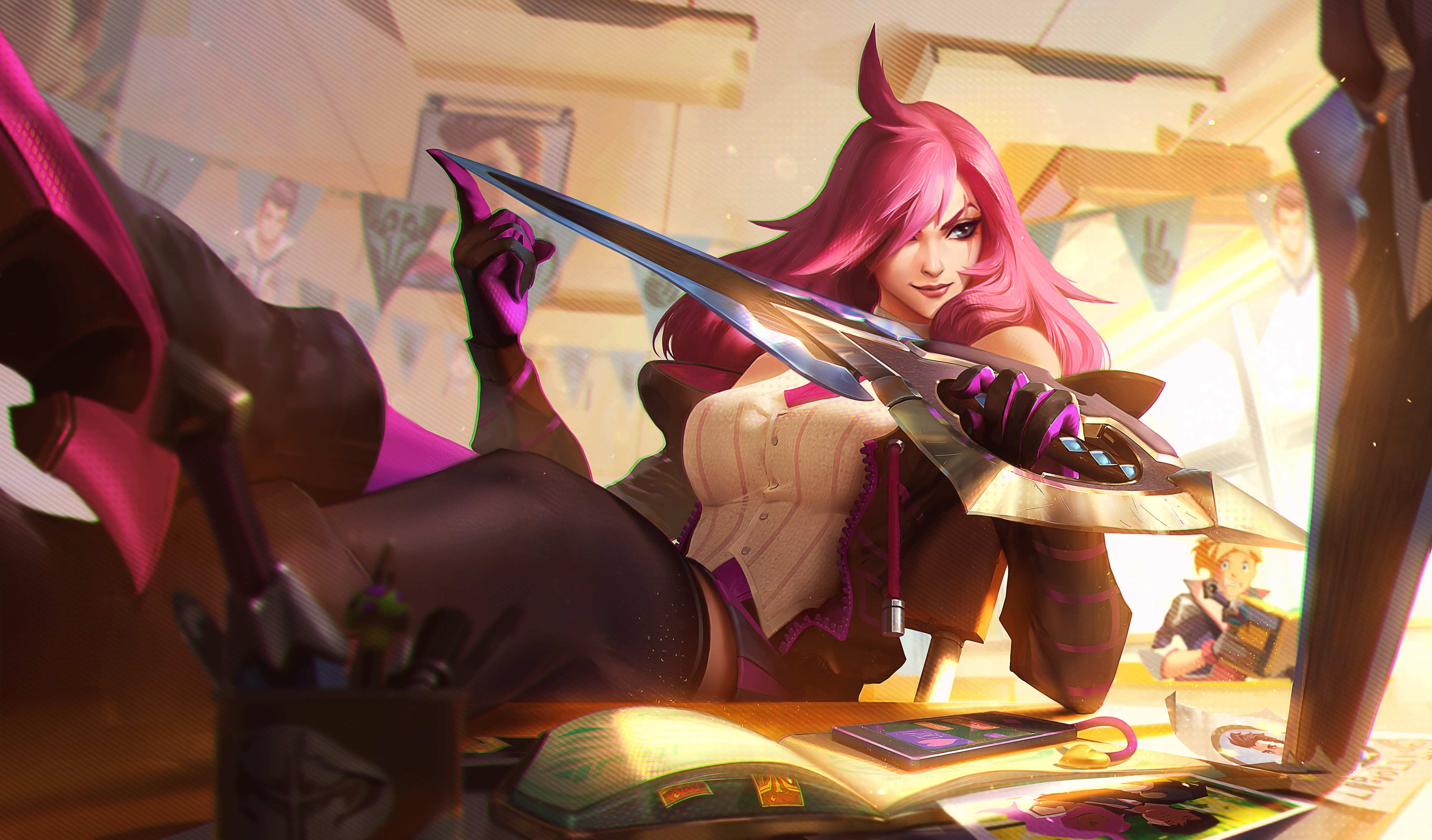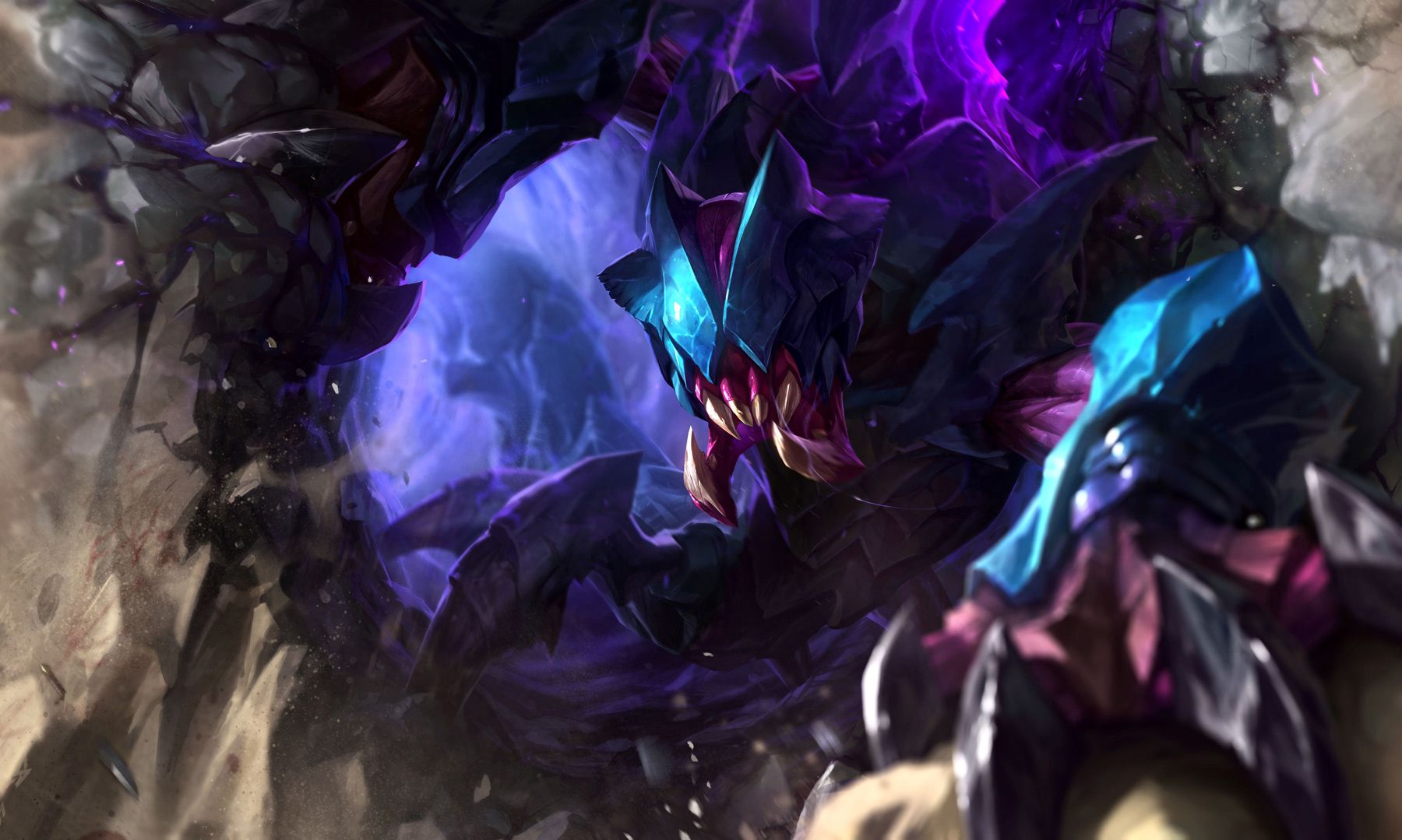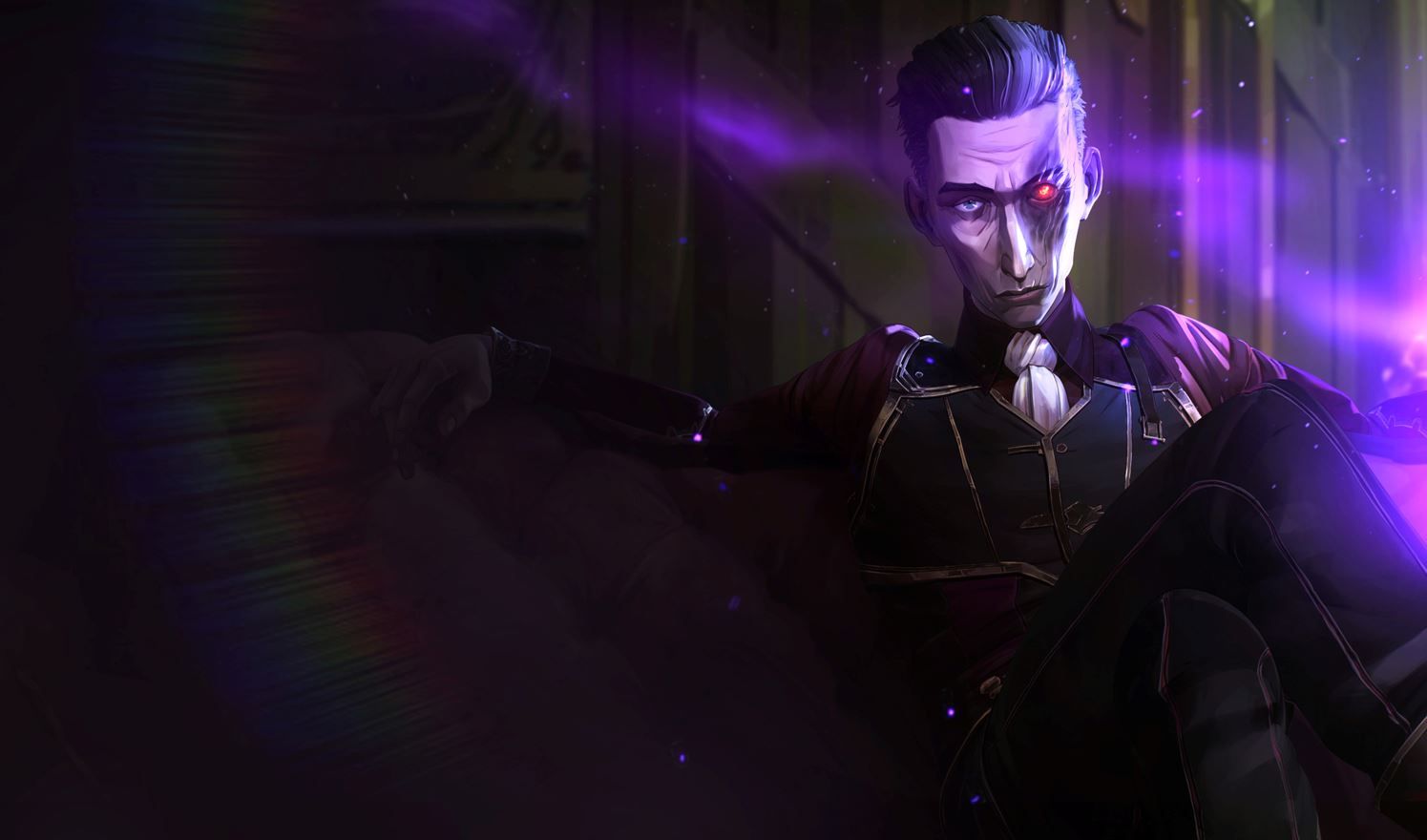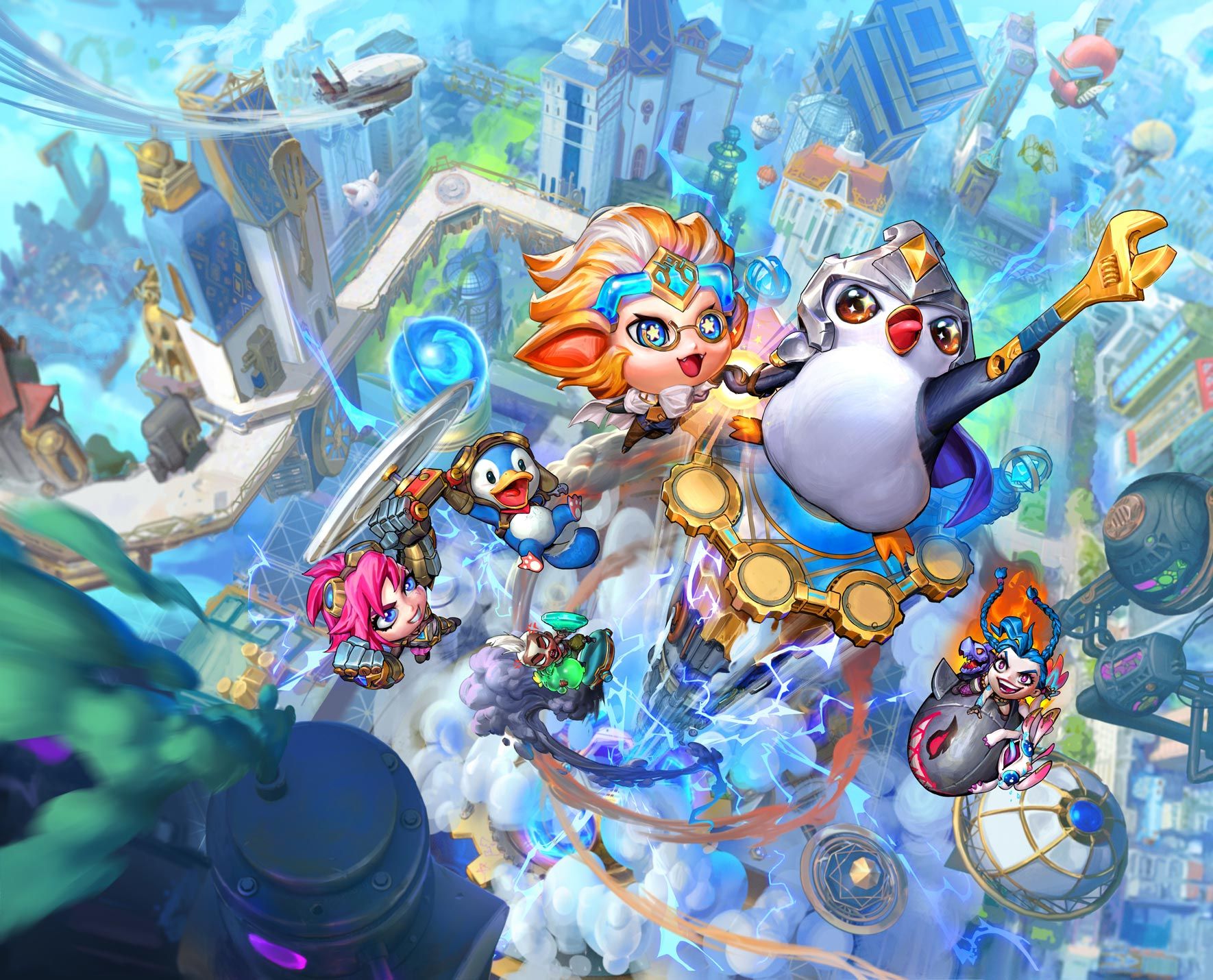/Dev Teamfight Tactics: Gizmos & Gadgets Learnings
Wow, this set went by fast! And with Gizmos & Gadgets coming to a close, it’s time for the ol’ Learnings article where we look back on what we promised we’d improve upon with Gizmos & Gadgets and then we discuss what can go better with Dragonlands, our next set!
Tl;DR
This article is long and we are going to dive deep into some pretty specific game design elements. If you are looking for just the high-level overview of how we think Gizmos and Gadgets went, give the outline below a read.
Looking Back
- Mechanic Complexity: After coming off the complex Shadow and Radiant items, Augments have been a huge success providing clear power and strategic decision making moments and in game variance. They’ve been so successful that we’re even bringing them into Dragonlands.
- Balance Thrashing: During Reckoning there were many patches that made previously powerful comps completely irrelevant. In Gizmos & Gadgets, there was significantly less of this due to our new balance philosophy of lighter adjustments.
- Unique Traits: In Reckoning, many of our traits just gave combat stats in different ways. With G&G, we set out to change this by introducing some of our wildest traits to date, however when Neon Nights rolled along we learned we need to keep pushing innovative traits come the mid-set.
- 5-cost Excitement: The 5 to 3, carry to utility unit ratio that worked so well during Fates for 5-costs has worked well in G&G, but in the future we want those 5 carries to be splashable in more late game comps.
- The Ranked Climb: As we promised in our last Learnings article, we got rid of Ranked demotions—and (almost) everyone loved it. We’re still working on ways to tinker with LP gains to make the climb feel smoother, but overall we’re counting this as a win!
- Hyper Roll: Hyper Roll will continue to stay available throughout Dragonlands for most regions, but in the future, Hyper Roll is likely to be replaced by a game mode that improves upon our goals with Hyper Roll.
Looking Forward
- Variance and Novelty: Augments did a lot for G&G by adding more possibilities and combinations to the game, but reprinted units and traits did the opposite. Expect us to add more ways to create new and varied experiences in the future—one such way is less reprints.
- Item Systems Pain Points: One of the biggest pains in our item system is when you get dead components for the composition you are running in the Stage 4-7 PVE (Raptors) round. We’re not letting this issue drag on and will be directly fixing it next set.
- Spatulas and Emblems: During G&G many of our Emblems didn’t deliver on the exciting moments that past Emblems have. So moving forward we’re going to be focused on making sure a few of our Emblems are very transformative!
Augments: Augments are tons of fun, but G&G was just our first time with them. Now that we’ve learned a whole lot about Augments, expect us to dramatically improve the power balance, the distribution rules, and introduce ways to make your Augment choices more consistent!
Looking Back
To start off with, let’s take a look at the last learnings article and see how we did.
Mechanic Complexity:
Well we’re certainly starting off strong. Coming off Shadow and Radiant Items, we learned that set mechanics need to create excitement without giant layers of complexity. Hextech Augments did exactly that. They provided simple and clear points of power by saying, “Choose 1 of these 3 things that help you,” but the level of depth, variance, and excitement was unmatched by any mechanic we’ve had before. In fact, Augments have been so successful that we’ve opted into keeping Augments in Dragonlands as well. However, this is starting to open up a new challenge for the development team. With items, traits, champions, carousels, and Augments possibly becoming recurring core mechanics for TFT, this doesn’t leave a lot of room for additional mechanics. Eventually we will reach a point where there are just too many systems on top of each other, which would make entering the game as a new or returning player too difficult. So we are still going to be adding unique mechanics in addition to Augments, while keeping a close eye on the holistic experience to make sure the game doesn’t feel overly bloated by overlaying mechanics. We also understand that each set needs to bring something new and novel to the table, and if we’re at capacity for mechanical systems we’d have no room to add additional new ones.
Balance Thrashing:
During Reckoning there were many patches that had balance thrashing, the process of overly nerfing an overpowered composition to the point where they are unplayable—drastically shifting the meta and making a composition that players had put time into to master completely unviable. And while for the most part we avoided balance thrashing with Gizmos & Gadgets, the set’s balance wasn’t perfect by any means. Much of this is to be expected with the added complexity of the Augment system, as well as some of our most unique traits to date, such as Colossus, Mutant (which was really seven traits), and Yordle. We had a couple rough patches with Katarina, Kai’Sa, Irelia, and Warwick becoming dominant picks for the patch, but as promised, we usually took light approaches in adjusting the power balance throughout the game. I say usually because there were a few key instances of over buffing or nerfing, such as with Syndicates in patch 12.4. But overall, our light touch approach to balance changes had a clear positive of ensuring that comps you were used to playing didn’t just get deleted out of playability after a single patch.
That said, player perception and expectations didn’t always match up with our light balance adjustments. We often found ourselves in a lose-lose situation when it came to player expectations around our balancing. It was clear for a lot of players that when they saw something like an Irelia nerf in the patch notes, the severity of the nerf didn’t matter, as their expectation was that Irelia would no longer be a dominant composition. And if the light touch approach wasn’t enough, and Irelia was still winning games, it betrayed their expectations altogether. While we can now clearly see the pros and cons of each balance approach, we still believe that lighter touches to avoid balance thrashing is the correct balance strategy for the overall enjoyment of TFT, and we’ll be continuing that strategy in Dragonlands.
Unique Traits:
Reckoning had a few fun traits (Cavalier, Hellion, Abomination), but many (Dragonslayer, Forgotten, Redeemed) were just different ways to give a bunch of stats. After extensive player feedback about this, we committed to making more traits that provide unique and transformative experiences you haven’t had in TFT before. To do this, we invented some pretty strong (and wild) options like Colossus that had giant units that counted as two slots, Innovator that summoned different mechanical beasts, Mutants which changed every game, Mercenary that had a unique loss streak style, Scrap that changed how you use your items, Socialite which allowed you to almost make a six item carry in a different spot each game, and Yordle that generated—well, more Yordles. Even some of the more stat heavy traits like Challenger had unique hooks like a dash and attack speed boost with a reset mechanic to make them more fun. It was a massive improvement! That being said, there will always be a need for stat based traits—especially on the class side, as they are easy to grasp and get into as you learn the set. So don’t expect every origin to be wild and novel.
The one miss to talk about, though, is how this relates to mid-sets. In the mid-set expansion, the primary appeal is for players who have stuck with the set for the entire three months but are ready for something new. Striker was a new class added to this set, and was done so to save development time (wisely). But for Gizmos & Gadgets veteran players, a flat attack damage trait wasn’t needed as an onboarding tool, so this ended up feeling a bit bland compared to everything else. In the future expect us to continue making a mix of standard and novel traits at the set launch, but with a bit more emphasis on the novel side come the mid-set expansion. That way, the players who stick around are rewarded with continued depth in a set they’re already experts in!
5-cost Excitement:
In the last article, we discussed our framework for 5-costs that worked so well in Fates as the 5-to-3 Split: 5 unique carries and 3 unique utility champs. We applied this in Gizmos & Gadgets with the 5 carries being Akali, Jayce, Jinx, Kai’Sa, and Viktor, while the 3 utility champions were Galio, Tahm Kench, and Yuumi, and we continued this in Neon Nights.
This was once again successful and proved to us this framework is the right call moving forward. That’s not to say that each of these 5-costs were the best we’ve ever seen. Viktor’s spell was much harder to appreciate than Gangplank in Galaxies, Akali was extremely build specific, and Kai’Sa had similar issues to Reckoning Kayle in her feast and famine style when balanced. Come the mid-set, swapping Yuumi for Silco and Akali for Zeri kept this framework in place, so expect us to continue this framework, with each set having five unique carries and three unique utility outputs. Our goal for 5-cost carries is that they’re powerful enough to be a tempting add to your comp even if you aren’t running their traits. To that end, Akali was a miss because you only ran her in Syndicate comps. So come Dragonlands, we’re looking for more carry styles like Fates Yone and Kayn who didn’t necessarily need their traits to add immediate value to their teams.
The Ranked Climb:
In our last article we announced that we were going to add demotion protection to the ranked experience, so that once you reach a new rank like Diamond, you couldn’t lose it. For the massive majority of our players this was a HUGE success, as it alleviated the fear and pressure of losing the rank they had earned. We’ve heard numerous stories of players who used to hit a rank like Platinum and then quit out of the fear of demotion now continue playing, sometimes even making it to Diamond! We’re so happy this change made the game more enjoyable. That being said, it came with a very clear drawback. Because you can no longer demote, your hidden MMR (matchmaking rating) could become significantly misaligned with your visible ranking (Iron, Bronze, Silver, etc). This led players to situations where they got something like +30 LP for a 1st place, and -80 LP for an 8th place. When this happens, it can make climbing ranks feel helplessly impossible. We agree that feeling powerless to change your rank is a frustrating state to be in, and we want to amend that. It’s going to take some time and won’t be ready for Dragonlands launch, but we are actively investigating and redesigning our ranked system experience to come up with a way to avoid this scenario and help make it clear how you can improve. Keep an eye out for future updates as the plan for this feature takes shape.
Hyper Roll:
Gizmos & Gadgets was our second set to include Hyper Roll. The audience of players that enjoy it continue to do so, as many players feel the game mode has less pressure and a shorter time commitment, allowing them to reach capped end game boards more consistently. We also made some improvements to game flow by adjusting when you get your gold as well as the duration of round timers. Hyper Roll will continue to stay available for Dragonlands for most of our regions. However, I want to be upfront about its long term future. Overall, Hyper Roll didn’t perfectly execute on the goals of a lower stress mode that took less time. In some cases, the game can actually be more stressful, since every turn forces you to take a ton of actions. Over time we are going to be attempting other modes and executions on these goals, and if we find something we believe is promising that executes upon similar goals as Hyper Roll, we may swap out the mode. So after Dragonlands, Hyper Roll is likely to be replaced, but we will only do so when we have something to swap in that improves upon the mode’s goals. We realize for some major Hyper Roll fans this may be disappointing to hear, but if we have too many queues our audience will be split too widely, creating a negative experience across all modes. Regardless, stay tuned for the future of modes as we continue to update you.
Looking Forward
Variance and Novelty
Our single biggest learning from Gizmos & Gadgets and its success is just how important variance and novelty are. With each new set release, each game you play on that set, and each composition you build, it's become very clear to us that you are looking for an awesome new experience. What happens if you get a 3-star Galio? What happens if you get Level Up AND High End Shopping? What happens if you get all 3 versions of Knife’s Edge in the same game? The more unique experiences you can have and chase, the better the game is in the long term. From a development perspective this has now become our top priority with the development of each set. However, this does have some pretty big implications for future sets.
On the units and traits side for example, while we have almost never reprinted 5 costs, we have reprinted 4 costs quite often. However we’ve learned that even the most fun champions like Draven, even with a new hook like infinite range from the VIP bonus, are still not hitting that novelty bar—especially when they were just in the previous set. Most players really weren’t excited to play more Draven after 6 months of a similar experience so recently. So moving forward expect us to cut down on the number of reprinted traits and 3 and 4-cost champions, especially if they were in a recent set. To be clear, this doesn’t mean 0 reprints, but it does mean you’ll see less of them.
On the systems side, we saw just how much potential variance can add to the game. Augments is the clear winner, but even more minor things like Mutant variations or where the Socialite hex was located go a long way into making every game feel different. These extra hooks add so many more combinatorics (a word that my editor had to look up and made me define here: mathematics concerned with counting possible combinations of things) to the game and we’re definitely interested in pursuing more of these. So expect to see more systems that add variation to the game in small ways that lead to many more potential outcomes. Of course, we’re going to do so with care, as we’ve learned from varied carousels. Back in the day, carousels used to have the possibility of full items, which created a rather unenjoyable experience by removing the autonomy to build your core items for the team you drafted.
Item Systems Pain Points
The item system is a complex part of TFT that has a long history, as well as some very deep seeded issues within the TFT space. While there are many issues with our Item system, here I will focus on our highest priority fix—the distribution of items. How many of you have played a game where early on you get some Rods and Tears, so you get some Arcanists and build an Ability Power heavy comp (as you should). Things are going pretty well, and then you get to the final PVE stage and the raptors drop 2 B.F. Swords, a Negatron Cloak, and Sparring Gloves. It’s maddening—you may even want to yell out the name of a Dev (e.g. Kent, or Wittrock) in frustration!? It’s far too late to pivot to a comp that can make use of a Bloodthirster and Infinity Edge, and even if you make the Quicksilver, the wasted Deathblade feels awful. We agree that this is a major issue and leads to a lot of dead games that feel out of your control. So, while I can’t spoil the exact thing we’re doing yet, expect to see a MAJOR change to the Stage 4-7 PVE round that will massively change how the final item distribution works so that you never feel like the game cheated you out of a win. And maybe after this change, you won’t be yelling a Dev’s name in spite, but instead in delight!? Anyways, we’re really excited for you all to see this, and hopefully it shows how much we treasure you!
Spatulas and Emblems
In the past, we’ve had some extremely transformative Emblems that led to some of our most memorable moments in TFT history (for better and worse). Blademaster Nocturne in Elements (aka the Blender), Protector Aurelion Sol in Galaxies, or Mage Swain in Fates were just a few of the most wild and fun examples. Players looked forward to the crazy combinations that were possible, and that was even before we introduced the elusive Emblems. Unfortunately in both Reckoning and Gizmos & Gadgets we ended up pretty short in this area. Even more disappointing was some of the Emblems that could have been unique (Twinshot, Yordle) ended up being cut. There were some exceptions like Synaptic Mutant Ahri, but overall this led to spatulas not really feeling special, and a lot of dead spatulas on the carousel, which is not what we want for our iconic golden item. Moving forward, we’re going to focus on making sure a few of the Emblems are transformative by leaning into weird cases instead of backing away from them! That’s not to say every Emblem is going to be wild, as things like the Bruiser emblem will still exist. But hopefully in Dragonlands there are a bunch of weird options that make you raise your eyebrows when a Spatula drops, instead of sighing and praying for a second one.
Augments
Finally, we have to end on Augments. Now I could write an entire article about just the Augments, but I’ll try to be brief. Augments have been a big success in adding variance and increased depth to a point where we believe they have the potential to be a permanent addition to TFT. However, the Gizmos & Gadgets version was our first attempt at the system and it came in pretty hot, so we believe right now, this is just a baseline with lots of room to explore and improve over time. Now is the time we will be asking ourselves a lot of key questions about the system including:
- Is 3 the right amount of Augments to get in a game?
- Is 1-4, 3-5, and 4-6 the right stages to get these Augments?
- Are the power levels of Augments correct?
- Are the distribution rules correct?
- Do we need to add any systems on top to alleviate worst case scenarios?
- Are certain types of Augments not good for the game?
- What new types of Augment spaces have we not explored yet?
There’s so much room to improve the system which has us very excited. Immediately though, what you can expect to see is the team focusing on creating a framework around the power levels and balance of the various Augments to make sure the choices feel fair instead of just based on the rules. For example, we launched with every “Heart Augment” being a T1 Augment so the rules were clear, but overtime we realized a Bruiser Heart and an Innovator Heart aren’t the same, so we needed to bend those rules. Sniper’s Nest and Gold Reserves are both trait linked Augments that adjust specific traits in cool unique ways, but one of them was T1 and the other T2. Why? Stuff like this is what we’re aiming to improve for the launch of Dragonlands. There’s so much more to talk about, but for now I’ll say expect us to dramatically improve the power balance of Augments, the distribution rules to remove dead choices, and introduce other ways to make your Augment choices more consistent! All of this is to say that we won’t get every improvement in Dragonlands, but there’s so much potential here in the system. So keep giving us your feedback around Augments!
That’s it for now. Thanks for playing TFT and giving us your feedback. Learning what you enjoy about the game helps us make TFT the best game it can be! We can’t wait to show you how we’ve applied our learnings to the next set! Until then, take it easy!





